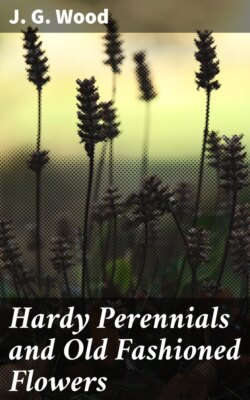Читать книгу Hardy Perennials and Old Fashioned Flowers - J. G. Wood - Страница 28
На сайте Литреса книга снята с продажи.
Anemone Sylvestris.
ОглавлениеTable of Contents
Snowdrop A.; Nat. Ord. Ranunculaceæ.
This hardy herbaceous species comes from Germany, but it has been grown nearly 300 years in this country, It is distinct, showy, and beautiful; it ranks with "old-fashioned" flowers. Of late this Windflower has come into great favour, as if for a time it had been forgotten; still, it is hard to make out how such a fine border plant could be overlooked. However, it is well and deservedly esteemed at the present time; and, although many have proved the plant and flowers to be contrary to their expectations in reference to its common name, "Snowdrop Anemone," the disappointment has been, otherwise, an agreeable one. It only resembles the snowdrop as regards the purity and drooping habit of its flowers.
Well-grown specimens have an exceedingly neat habit—the foliage spreads and touches the ground, rounding up to the flower stems (which are about a foot high) in a pleasing manner. The earliest flowers are very large—when fully open quite 1½in. across—but they are more often seen in the unopen state, when they resemble a nutmeg in shape. Whether open or shut, they are a pure white, and their pendent habit adds not a little to their beauty, as also does the leafy involucre. The leaves are three-parted, the two lower lobes being deeply divided, so that at a first glance the leaves appear to be five-parted; each of the five lobes are three-cleft, and also dentate, downy, and veined; the leaf stalks are radical, red, long, slightly channelled, and wiry; in all respects the leaves of the involucre resemble those of the root, excepting the size, which is smaller, and the stalks are green, like the flower stems.
In a cut state, the pure satin-white blossoms are fit for the most delicate wreath or bouquet; they have, morever, a delicious clover-scent. It enjoys a light vegetable soil in a slightly shaded and moist situation; if it could be allowed to ramble in the small openings of a front shrubbery, such positions would answer admirably.
The roots are underground-creeping, which renders this species somewhat awkward to manage when grown with others in a collection of less rampant habit. On the other hand, the disposition it has to spread might very well be taken advantage of by providing it with a good broad space, than which nothing could be more lovely for two months of the year.
It is needless to give directions for its propagation, as the runners spring up all round the parent plant. Slugs are very fond of it, and in early spring, especially when the new growths are appearing, they should be kept in check, otherwise they will eat down into the heart of the strongest plant; a dose of clear lime water will be found effective and will not hurt the new leaves; if this is followed up with a few sprinklings of sand, the slugs will not care to occupy such unpleasant quarters.
Flowering period, May and June.
